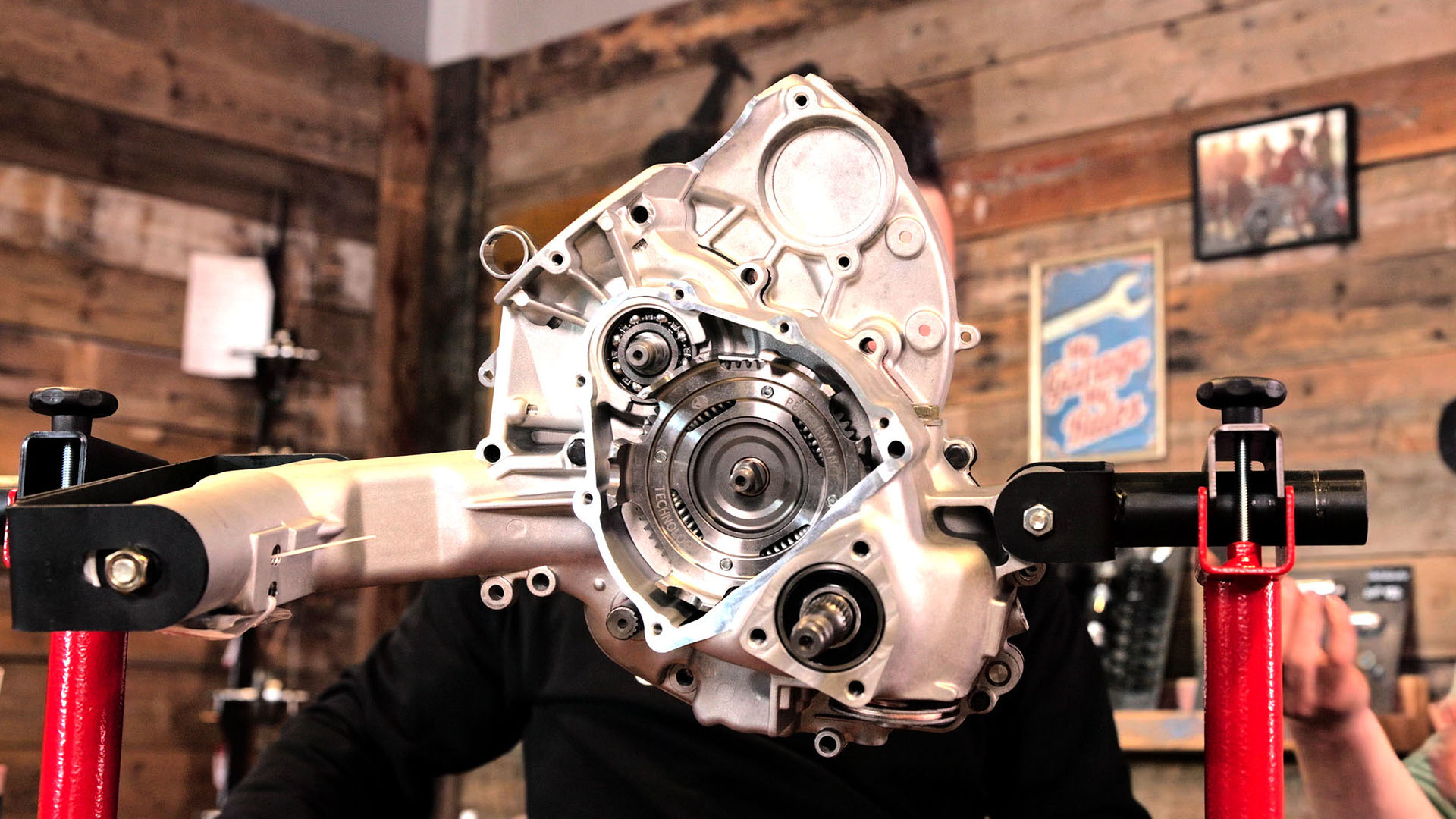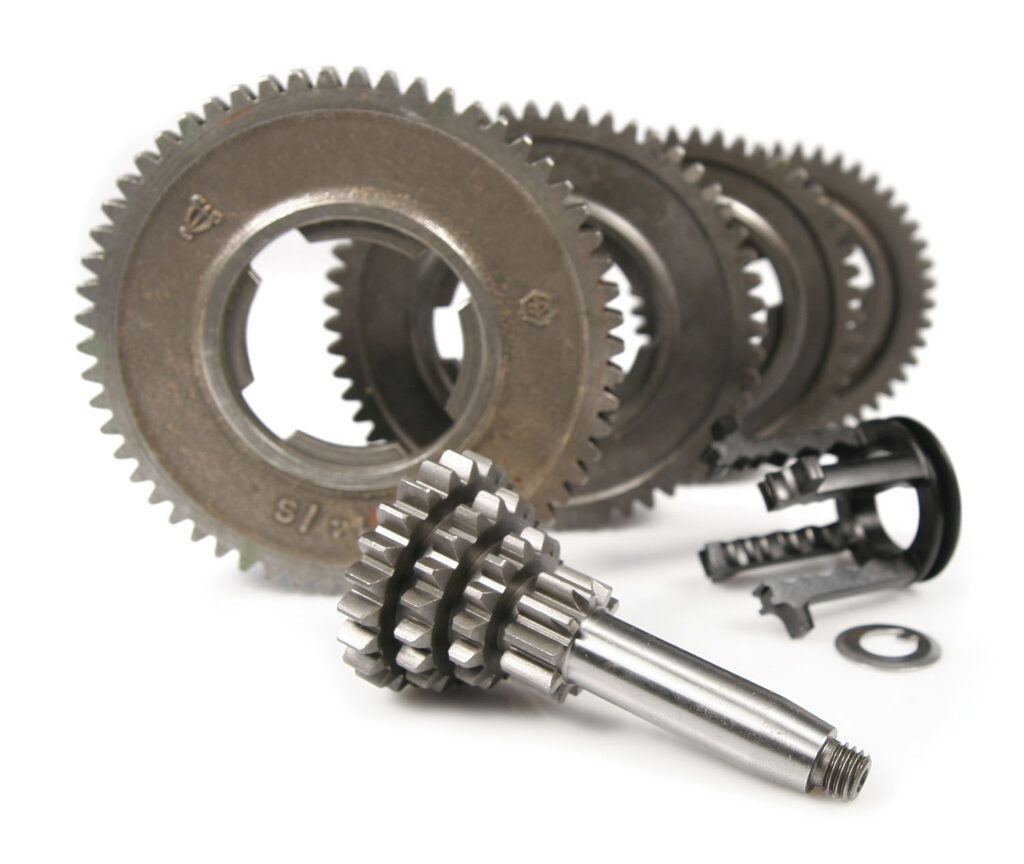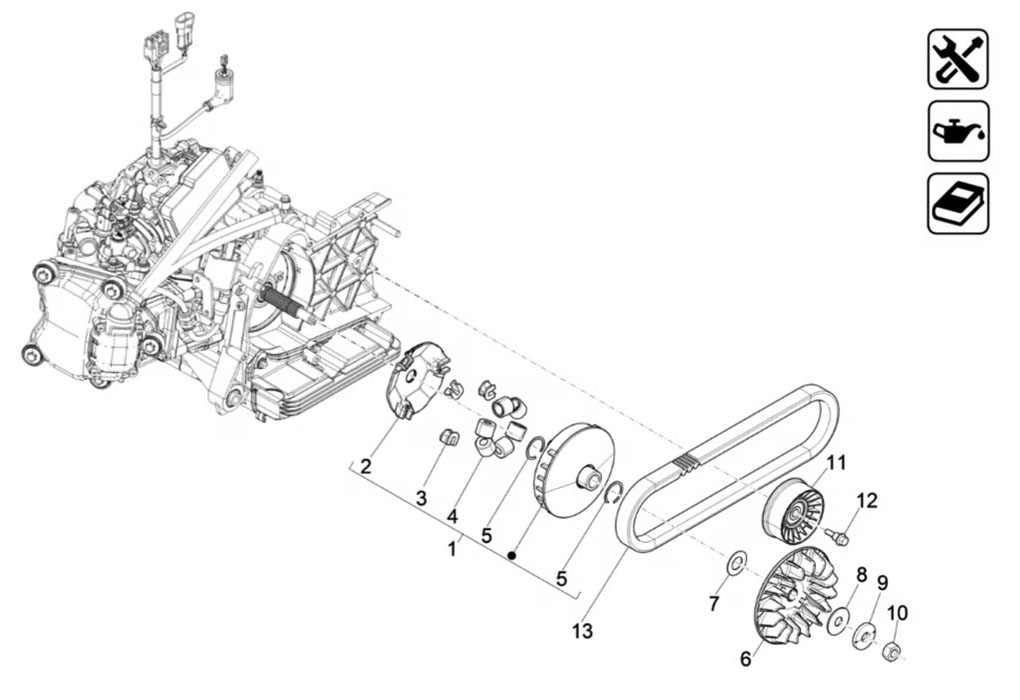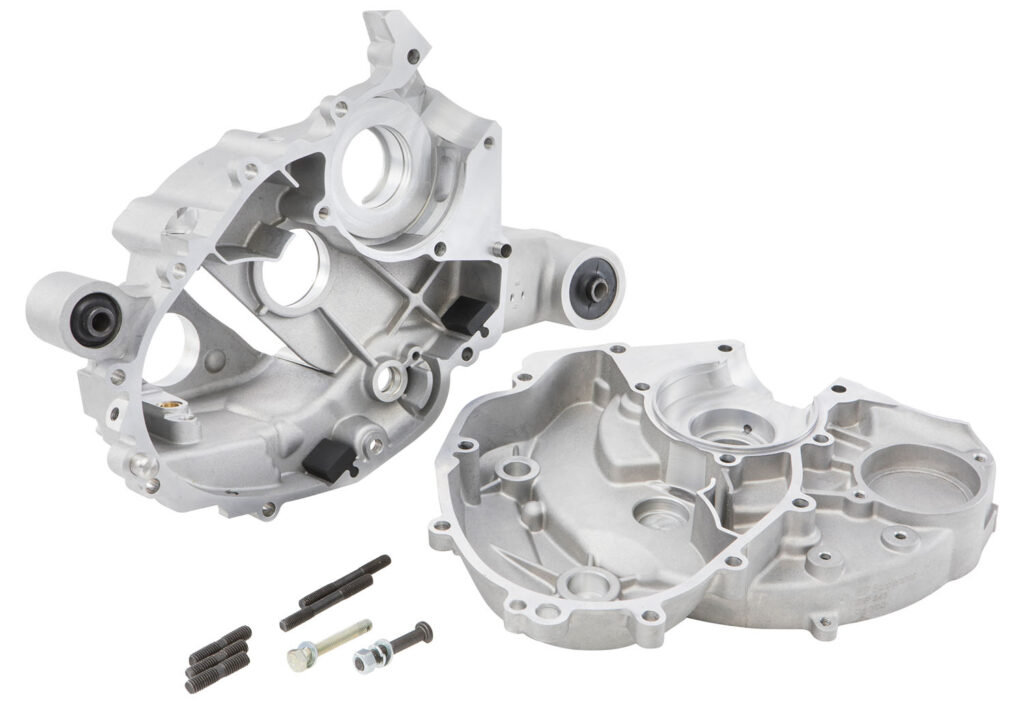At school, it was either one of the subjects you liked or hated: physics. Forces, their transmission and mechanics were all topics that were covered in the course of this. All these subjects also play a fundamental role in our Vespa scooters.
While the old Vespas were mainly fitted with manual gearboxes, the focus since the 1980s has mainly been on automatic scooters. Today, we will take a look at what makes the gearbox so unique and how the two types differ. Because the difference lies not only in the shifting process.
Manual transmission: manual work for the shifting process
Basically, every gearbox in our Vespa scooters is a mechanical system that transmits the engine power to the rear wheel. It consists of various gears, shafts and the shift mechanism. The main components of a typical Vespa gearbox are:
- Primary drive: consists of a primary shaft and primary gears that transmit the engine speed to the transmission
- Gear shafts: There is usually a main shaft (drive shaft) and a drive shaft (secondary shaft)
- Gear cogs: These are arranged in different sizes to enable different transmission ratios
- Gearshift mechanism: Consists of a gearshift claw and gearshift lever that allows the driver to change gears
In addition to these main components, there are of course many smaller components that are just as important. To give a good overview of these components, the focus here is only on the main components.
The structure is identical in all cases: The differently sized gear wheels are located on the main shaft and are arranged according to size. The gearbox is operated via a twist grip on the left handlebar and a clutch lever. Vespa riders turn the handle to change gears, while at the same time the clutch is operated to disengage the gearbox. If you would like to know more about the clutch itself, you are welcome to read the following article: “Vespa clutch – tuning and improvement possibilities”
The 1st gear has the largest gear pair, which delivers the highest gear ratio and therefore the highest torque. This is particularly useful when starting off from a standstill.
For all subsequent gears, the gear wheels become smaller, which enables a higher speed with lower torque. The scooters differ depending on the model. Some are equipped with the “shorter” 3-speed gearbox as standard. The majority, however, are equipped with the “longer” 4-speed gearbox.
The switch to automatic transmission (Variomatic)
In the 1980s, Vespa introduced automatic transmissions, also known as variomatic transmissions. Nowadays, only automatic transmissions are available, as they are reliable, simple and have proven their worth. These systems use a continuously variable belt drive instead of a manual gearbox. However, the main components are completely different to those of historic Vespas:
There is a pulley system that changes depending on the engine speed to allow stepless adjustment of the transmission ratio.
Furthermore, a belt transmits the power from the engine to the rear wheel axle. A centrifugal clutch is also installed, which establishes and releases the power connection at certain speeds without the need to manually operate a clutch.
Technical development and innovations
Over the years, Vespa has integrated various improvements and innovations into its transmission technology. In the meantime, various manufacturers have ventured into improvements together with the dealers. As the materials have to withstand extremely high loads, the focus is primarily on durability and robustness. SIP Scootershop has also been involved with high-end racing parts and now has a large selection in stock.
Particularly after tuning measures with significant increases in power and speed, only the acceleration behavior is improved due to the original transmission ratio. The engine therefore always revs at the limit, which leads to a considerable additional load on the crankshaft, bearings and pistons. It is therefore advisable to use a “longer ratio”, especially when tuning. The advantages are obvious: the same top speed at lower revs. While higher-quality steels and alloys were developed for gears and shafts to increase durability and reliability, there were also changes in the types of transmission.
With the automatic transmission, electronic control elements and improved variator systems were developed to enable even finer and more efficient power transmission.
Care and maintenance are essential
As with almost all components, regular maintenance and care is essential to prevent damage to the transmission. In particular, it is important to change the gearbox oil regularly (for manual transmissions) in order to remove the small metal parts from the system and to lubricate and protect the gears and bearings. With manual transmissions, the clutch should also be checked regularly for wear and correct adjustment. With variomatic transmissions, on the other hand, the belt must be checked regularly for wear and replaced if necessary.
The transmission of a Vespa is a technical marvel that has undergone an impressive evolution from the early manual systems to modern automatic variomatic transmissions. It not only ensures efficient power transmission from the engine to the rear wheel, but also provides the unmistakable riding experience that Vespa fans around the world appreciate. And the great thing is that it doesn’t usually matter whether physics was your favorite or hated subject at school. Because above all, a Vespa delivers joy and an unmistakable attitude to life.






